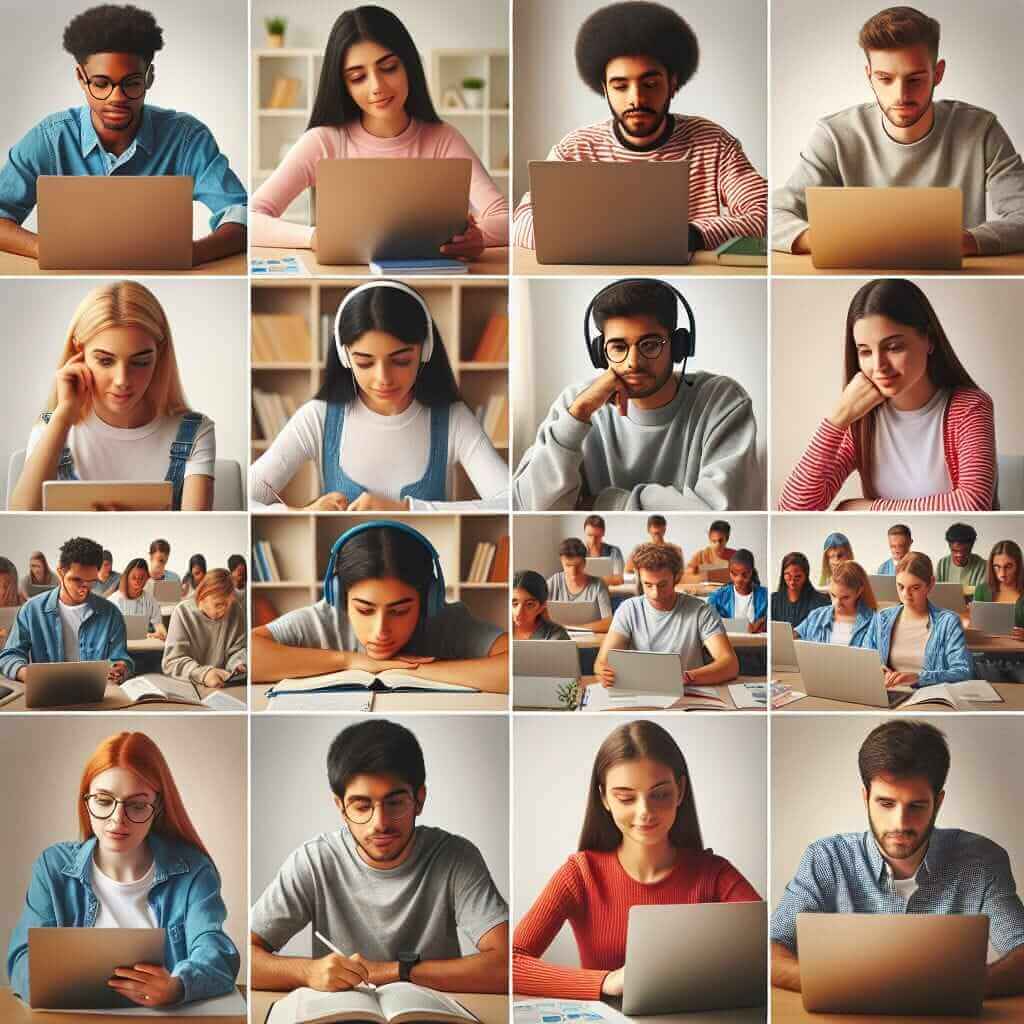The Reading section of the IELTS exam assesses various skills such as reading comprehension, identifying information, and understanding complex texts. One topic that has been increasingly relevant in recent years is the impact of digital technology on traditional education. Given its significance and frequent appearance, there’s a strong chance it could show up in future exams. This topic not only encompasses technological advancements but also explores how these changes affect student learning, teacher engagement, and educational structures.
In this article, we will create an IELTS Reading practice test centered around “What are the effects of digital technology on traditional forms of education?” Additionally, we will provide a detailed breakdown of the answer keys, common pitfalls, essential vocabulary, and crucial grammar points.
IELTS Reading Practice Test: The Effects of Digital Technology on Traditional Education
Reading Passage
Digital technology is transforming traditional education in multifaceted ways. Initially, the adoption of digital tools was sporadic and primarily supplementary. Over time, however, digital platforms have become integral to educational processes, altering how information is disseminated and consumed.
One of the most significant changes is the advent of online learning. With platforms like Coursera, Khan Academy, and edX, students across the globe can access high-quality education that was previously geographically or financially inaccessible. These platforms have democratized education, providing a plethora of courses that cover a broad spectrum of subjects.

Students’ interaction with educational material has also evolved. Interactive e-books, digital note-taking tools, and educational apps have replaced traditional textbooks and paper-based methods. These tools offer a more engaging and customized learning experience, catering to different learning styles and needs.
Moreover, digital technology has enabled teachers to adopt more dynamic teaching methods. With the integration of multimedia presentations, virtual labs, and augmented reality simulations, educators can create an immersive learning environment that can better grasp students’ attention. Additionally, digital assessment tools allow for instant feedback, making the evaluation process more efficient.
However, the transition to digital technology isn’t without its challenges. One of the primary concerns is the digital divide—the gap between those who have access to technology and those who do not. This divide can exacerbate existing educational inequalities, leaving disadvantaged students further behind.
Another issue is the potential for decreased face-to-face interactions. Traditional classrooms allow for social interaction and relationship-building, which are crucial elements of holistic education. While virtual classrooms can replicate some aspects, they can’t completely replace the human element that a physical classroom offers.
In conclusion, while digital technology offers numerous benefits for enhancing education, it’s essential to address the associated challenges to ensure that it complements rather than replaces traditional education forms.
Questions
- Multiple Choice Questions
1.1 According to the passage, which of the following is NOT mentioned as a benefit of digital technology in education?- a) Customized learning experiences
- b) Instant feedback
- c) Geographic limitations
- d) Interactive e-books
1.2 What is one potential drawback of digital technology mentioned in the text?
- a) Higher costs
- b) Less access to high-quality education
- c) Decreased face-to-face interaction
- d) Limited course availability
-
True/False/Not Given
2.1 Interactive e-books cater to different learning styles and needs.
2.2 Digital technology has completely replaced traditional forms of education.
2.3 Digital platforms like Coursera and edX were initially unsuccessful. -
Sentence Completion
3.1 Digital technology tools have led to a more … learning experience for students.
3.2 The … is a concern when it comes to the transition to digital technology in education.
Answer Keys and Explanations
-
Multiple Choice Questions
1.1 c) Geographic limitations. The passage states that digital technology removes geographic limitations, not proliferates them.
1.2 c) Decreased face-to-face interaction. This drawback is explicitly mentioned as a concern with the shift to digital classrooms. -
True/False/Not Given
2.1 True. The passage states that interactive e-books cater to different learning styles and needs.
2.2 False. The passage mentions that digital technology complements traditional education but does not completely replace it.
2.3 Not Given. There is no mention of the initial success or failure of platforms like Coursera and edX. -
Sentence Completion
3.1 engaging and customized. The text notes that digital tools offer a more engaging and customized learning experience.
3.2 digital divide. It states that the digital divide is a significant concern.
Common Pitfalls
- Misinterpreting information due to unfamiliarity with specific vocabulary.
- Confusing ‘Not Given’ with ‘False’ in True/False/Not Given questions.
- Overlooking keywords that lead to the correct answers.
Vocabulary
- Democratized (adj.): [dɪˈmɒkrəˌtaɪzd] – Making something accessible to everyone.
- Disseminated (v.): [dɪˈsɛmɪˌneɪtɪd] – Spread or disperse information widely.
- Exacerbate (v.): [ɪɡˈzæsəˌbeɪt] – To make a problem, bad situation, or negative feeling worse.
Grammar
- Complex Sentences: Utilize subordinating conjunctions (e.g., ‘while,’ ‘although,’ ‘because’) to connect clauses with different levels of importance.
- Example: “While virtual classrooms can replicate some aspects, they can’t completely replace the human element.”
- Passive Voice: Useful in formal writing to emphasize the action over the subject.
- Example: “Digital platforms have become integral to educational processes.”
Conclusion
If you aim to achieve a high score in the IELTS Reading section, it’s essential to practice with relevant topics and understand the range of questions that can be asked. Focus on improving your comprehension skills, expanding your vocabulary, and familiarizing yourself with complex sentence structures. Always review your answers and learn from your mistakes to make consistent progress in your preparation journey.